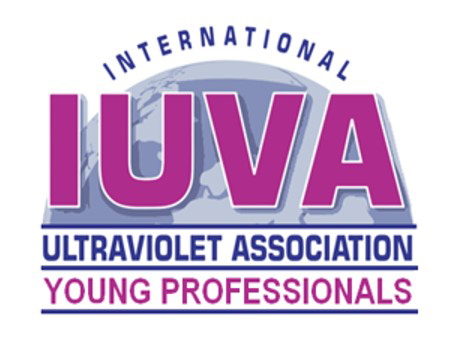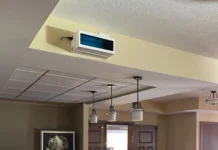YP Committee Accepting Inquiries for Coordinator Roles
The IUVA Young Professionals (YP) committee is looking for new candidates to join the YP committee team in coordinator roles. YP candidates, students and professionals who are younger than 35 or with fewer than five years of experience post-graduation in UV-related industry, government or academia, can email their interest in these volunteer coordinator roles to iuvayp@iuva.org.
Conference Coordinator
- Lead YP contribution to planning IUVA conferences and related events (e.g., coordinate YP group housing; organize YP forum; organize other proposed YP-led/-coordinated events, such as flash/e-poster sessions, happy hour meet-ups, etc.)
- Identify non-IUVA conferences of potential relevance to IUVA YPs
- Coordinate IUVA YP events at non-IUVA conferences
Communications and Engagement Coordinator
- Maintains committee email, including responding to inquiries and contacting mailing list regarding upcoming events.
- Update website; generate and post content for social media presence in conjunction with the committee and Technical Communications Coordinator
Technical Communications Coordinator
- Draft UV Solutions content related to IUVA in general and YPs specifically.
- Chair UV Solutions Task Force
Strategic Growth Coordinator
- Plan and execute strategic growth of IUVA YP community in Asia. Note, the focus of this role may change periodically as the IUVA YP Committee attempts to grow in different geographic regions or UV topic areas.
- Strategic growth initiatives might include coordinating online “ask-me-anything” discussions, K-12 design competitions, events in conjunction with IUVA or non-IUVA conferences, etc.
Apply for One of Three $5,000 Scholarships
The IUVA has approved three annual scholarships of $5,000 each. Applicants must be undergraduate or graduate students enrolled in an accredited university/college programs of science, technology, engineering or mathematics AND be a current member of IUVA in good standing.
To apply, simply answer the question, “Where are you now in the UV industry, and where do you hope to go in the UV industry in the future?” Responses must be 1,000 to 1,200 words and ideally call out the applicant’s scholastic focus, research interests and/or recent publications. Applicants also must include their full name, permanent mailing address, institution and area of study in their submissions. The application can be found at tinyurl.com/mr48xm2d.
Applications are due by March 31, 2023. Winners will be announced before the 2023 World Congress and receive the scholarship in two annual installments of $2,500 ($5,000 total). Winners also will be invited to share their research at a future IUVA event.
Paper Spotlights for Q4 2022
Paper spotlights are short summaries highlighting very recent intriguing peer-reviewed publications with a related subject to the topics of interest covered in UV Solutions Q4 2022.
Disinfection systems; measurement and testing
Title: UV disinfection audit of water resource recovery facilities identifies system and matrix limitations
Authors: Rauch, K. D., MacIsaac, S. A., Stoddart, A. K. and Gagnon, G. A.
A recent paper by Rauch et al. (2022) examined the need of a new assessment tool to monitor the performance of an installed full-scale UV reactor in a wastewater treatment facility. They found that while there are many methods to validate reactors prior to installation (bio dosimetry, fluorescent microspheres, etc.) and the well-accepted model-detector method to estimate real-time reduction equivalent fluence of installed reactors, all these methodologies had limitations.
The authors present the UV auditing methodology as an alternative assessment tool that uses indigenous E. coli as a bio dosimeter and compares the log reduction of E. coli at the plant to bench-scale dose response curves. Using these data, the UV audit estimates the reduction equivalent fluence in the installed reactor. Furthermore, by comparing non-linear kinetics modeling of the bench-scale data to the full-scale performance, the authors determined if the matrix or the UV system was limiting disinfection at the wastewater treatment facility.
Overall, this paper presents a novel approach to monitor UV disinfection performance of an installed full-scale reactor with the ability to pinpoint shortcomings of treatment which would allow facilities to make educated decisions on changes required of the UV reactor.
System design considerations
Title: UV/Chlorine Process: An Efficient Advanced Oxidation Process with Multiple Radicals and Functions in Water Treatment
Authors: Kaiheng Guo, Zihao Wu, Chunyan Chen and Jingyun Fang
This study reviewed the Advanced Oxidation Process (AOP), involving UV/Chlorine. As one of many AOP that exist, this article emphasizes the principles, reaction mechanisms and factors affecting the treatment process, compared with other UV-based AOP methods like UV/H2O2. The production of radicals is one of the main topics for this study. As is well established by previous works, the emerging AOPs serve as a contaminant control via the production of radicals, specifically hydroxyl radicals (like HO·) and Reactive Chlorine Species (RCS), such as: Cl·, ClO·, and Cl2·-. Modelling concentrations of such radicals were presented, finding that the production of RCS and HO· has higher concentrations for pH closer to 7 and at 254 nm.
Furthermore, the abatement of contaminants was evaluated via the reactivity of Specific Reactive Species, the roles of these species in the degradation kinetics of chemical contaminants, the inactivation of microbial contaminants and the reaction mechanisms and transformation pathways in several water matrices. The findings reveal that compared with the traditional UV-based AOPs (UV/H2O2), UV/Chlorine is more efficient and energy-saving for chemical oxidation and disinfection, and its efficiency is less affected by water matrix components.
On the other hand, there exist application concerns with this technology, highlighting the formation of toxic Disinfection by-products (DBPs), increased toxicity for certain microbial species and high energy consumption with scenarios involving DOM and ammonia-rich waters. As an emerging technology exhibiting high efficiency for oxidation and disinfection, limitations appear like in common oxidation processes for water treatment. However, strategies should be developed to make full use of these highly reactive species and overcome their limitations. The authors strongly recommend the use of the UV/Chlorine process in tandem with other treatments to create multiple barriers for safe water production.






